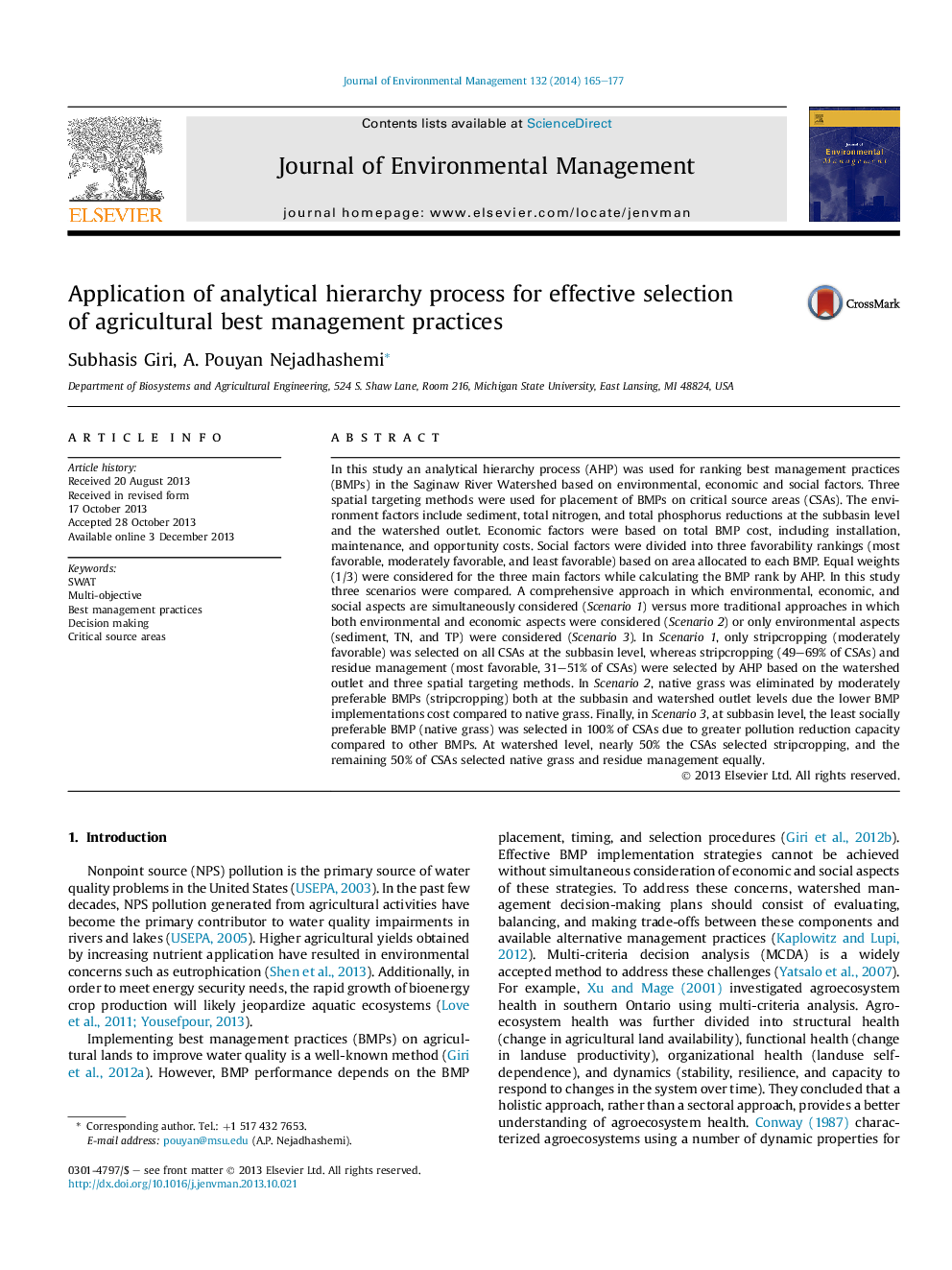| کد مقاله | کد نشریه | سال انتشار | مقاله انگلیسی | نسخه تمام متن |
|---|---|---|---|---|
| 1055793 | 1485280 | 2014 | 13 صفحه PDF | دانلود رایگان |
• Analytical hierarchy process was used for ranking best management practices.
• No single practice can satisfy all environmental, economic, and social issues.
• This study will aid decision making for watershed-scale planning.
In this study an analytical hierarchy process (AHP) was used for ranking best management practices (BMPs) in the Saginaw River Watershed based on environmental, economic and social factors. Three spatial targeting methods were used for placement of BMPs on critical source areas (CSAs). The environment factors include sediment, total nitrogen, and total phosphorus reductions at the subbasin level and the watershed outlet. Economic factors were based on total BMP cost, including installation, maintenance, and opportunity costs. Social factors were divided into three favorability rankings (most favorable, moderately favorable, and least favorable) based on area allocated to each BMP. Equal weights (1/3) were considered for the three main factors while calculating the BMP rank by AHP. In this study three scenarios were compared. A comprehensive approach in which environmental, economic, and social aspects are simultaneously considered (Scenario 1) versus more traditional approaches in which both environmental and economic aspects were considered (Scenario 2) or only environmental aspects (sediment, TN, and TP) were considered (Scenario 3). In Scenario 1, only stripcropping (moderately favorable) was selected on all CSAs at the subbasin level, whereas stripcropping (49–69% of CSAs) and residue management (most favorable, 31–51% of CSAs) were selected by AHP based on the watershed outlet and three spatial targeting methods. In Scenario 2, native grass was eliminated by moderately preferable BMPs (stripcropping) both at the subbasin and watershed outlet levels due the lower BMP implementations cost compared to native grass. Finally, in Scenario 3, at subbasin level, the least socially preferable BMP (native grass) was selected in 100% of CSAs due to greater pollution reduction capacity compared to other BMPs. At watershed level, nearly 50% the CSAs selected stripcropping, and the remaining 50% of CSAs selected native grass and residue management equally.
Journal: Journal of Environmental Management - Volume 132, January 2014, Pages 165–177
